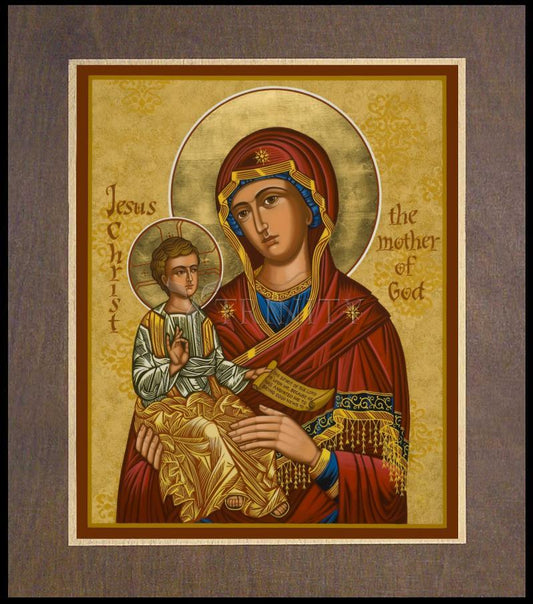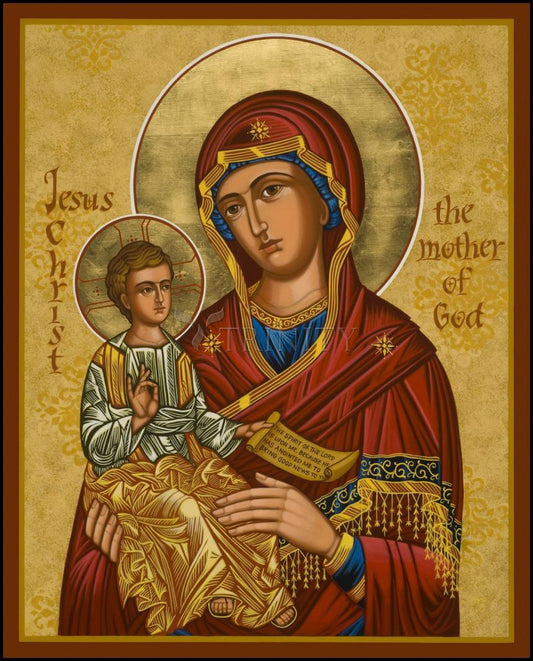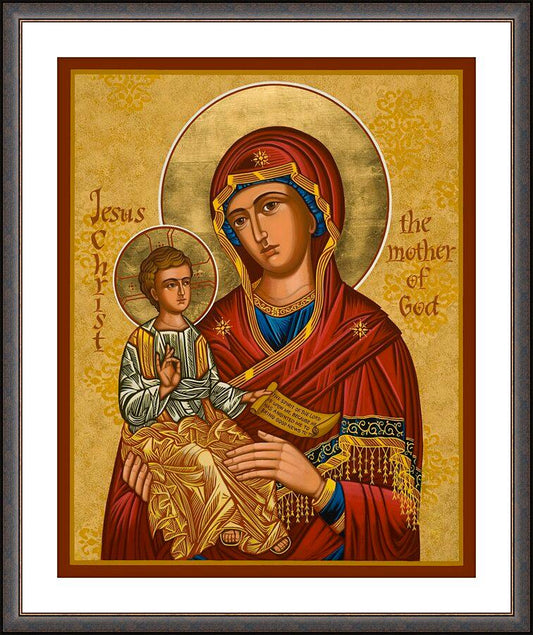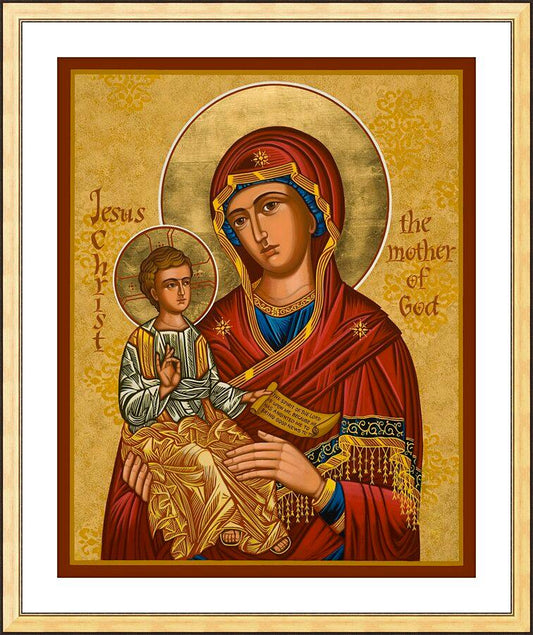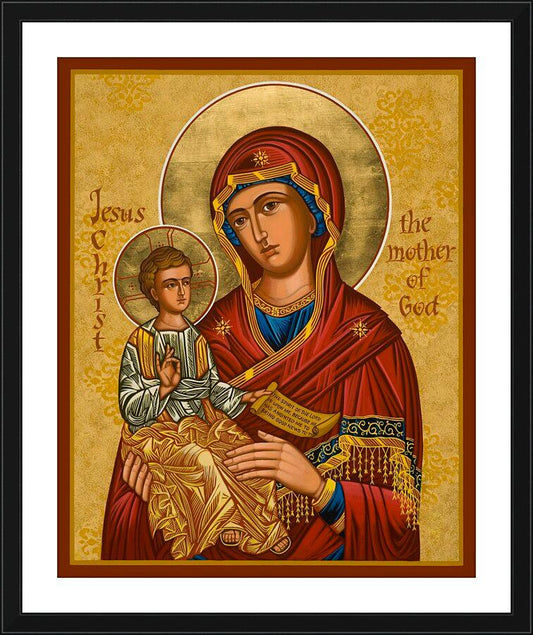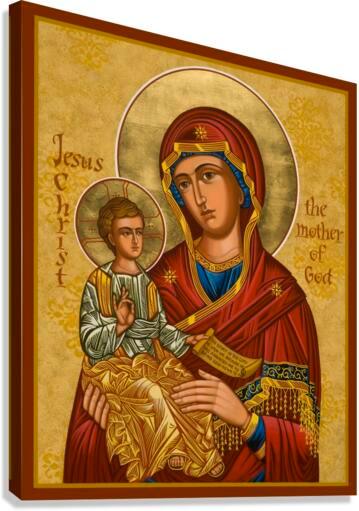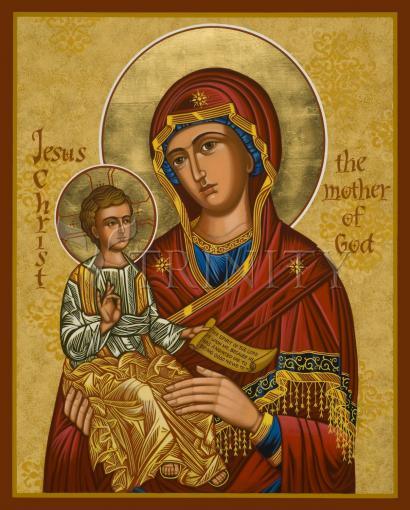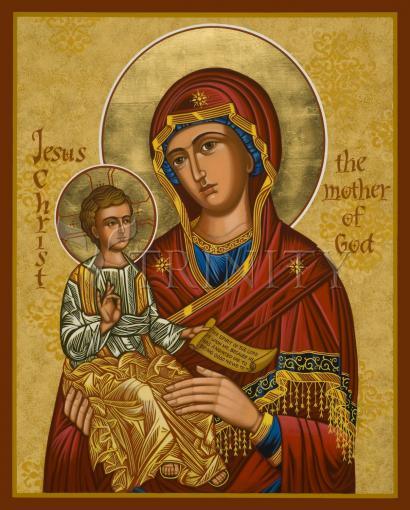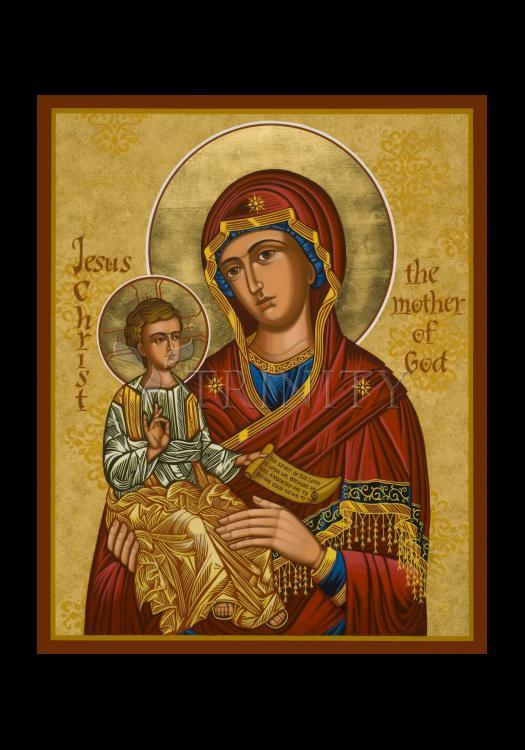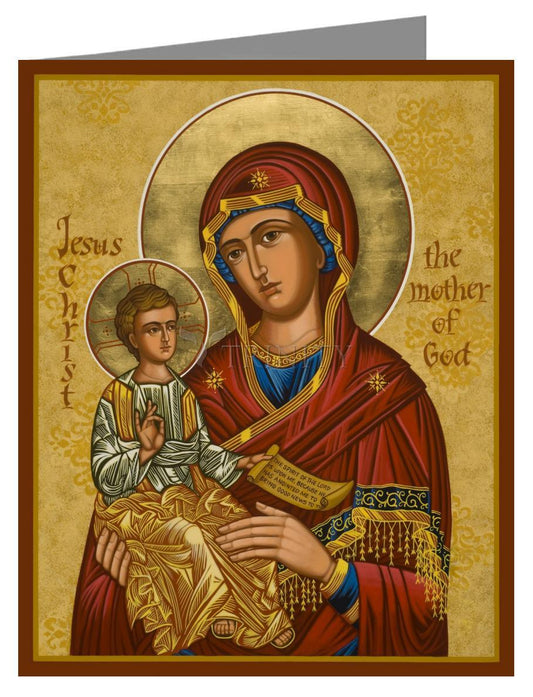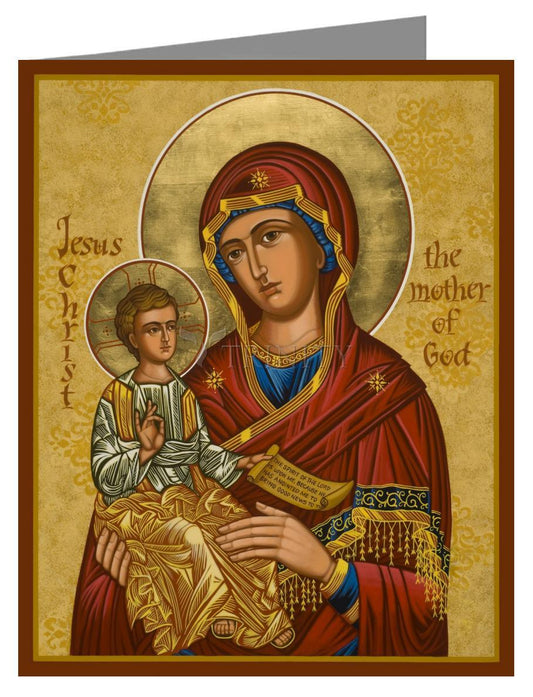ARTIST: Joan Cole
ARTWORK NARRATIVE:
We fly to your protection, most holy Mother of God; please listen to our petitions and needs, and deliver us from all dangers, ever glorious and blessed Virgin Mary.
Read More
From antiquity, Mary has been called"Theotokos", or "God-Bearer" (Mother of God). The word in Greek is"Theotokos".The term was used as part of the popular piety of the early first millennium church. It is used throughout the Eastern Church's Liturgy, both Orthodox and Catholic. It lies at the heart of the Latin Rite's deep Marian piety and devotion. This title was a response to early threats to 'orthodoxy', the preservation of authentic Christian teaching. A pronouncement of an early Church Council, The Council of Ephesus in 431 A.D., insisted "If anyone does not confess that God is truly Emmanuel, and that on this account the holy virgin is the"Theotokos"(for according to the flesh she gave birth to the word of God become flesh by birth) let him be anathema." (The Council of Ephesus, 431 AD)
The Council's insistence on the use of the title reflected an effort to preserve the teaching of the Church that Jesus was both Divine and human, that the two natures were united in His One Person. Not only was that teaching under an assault then, it is under an assault now, and failing to "get it right" has extraordinary implications. The reason that the early Church Council pronounced this doctrine was "Christological", meaning that it had to do with Jesus Christ. One of the threats was from an interpretation of the teachings of a Bishop of Constantinople named Nestorius. Some of his followers insisted on calling Mary only the "Mother of 'the Christ'". The Council insisted on the use of the title (in the Greek)"Theotokos,"("Mother of God" or "God-bearer") to reaffirm the central truth of what occurred in the Incarnation of Jesus Christ.



